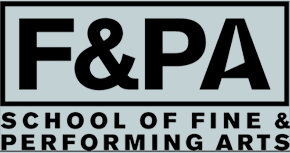
Simon Bolivar - Hero 2
The art of Nestor Madalengoitia (b. Lima, Peru, 1959), a portrait and mural artist, is inspired by the folk arts and history of Peru. Madalengoitia’s work is informed by a modern understanding of the Pre-Columbian Peruvian tapestries of Paracas, a town on the Paracas Peninsula, Peru with a rich and ancient tradition of weaving in wool and cotton.
The Dorsky collection includes three fine examples of Peruvian weavings. “Peruvian Paracas textile fragment” (Pre-Columbian [American]; 2 1/4 x 2 in., camelid wool, cotton, c. 300–800 CE, #1959.014) contains four geometric symbols similar to those often used by Madalengoitia. The second “Peruvian textile fragment” (Pre-Columbian [American], 16 3/4 x 4 3/4 in., camelid wool, cotton; c. 1400 CE, #2006.022) is rectangular and divided visually into two sections, with shaman-like figures in each half, bordered by geometric bands. The fine detail and craftsmanship of this piece indicates that it was made for ceremonial use. The third textile is “Fragment from a Mummy Wrapping” (Pre-Columbian [American], 5 x 13 ¼ in., camelid wool, cotton, c. 1200 CE, #1982.007.001). The jewel colors of these pieces have remained brilliant over the centuries due to the arid climate of the Peruvian coastal area of Paracas. The use of camelid wool (from high elevation pack animals such as llamas, alpacas, and vicunas) for the weft and a warp of cotton, a coastal valley crop, in all three weavings suggests a long culture with extensive trading.
Madalengoitia’s paintings are defined by a personal visual and conceptual vocabulary enriched by references to the brilliant Paracas palette and geometric symbols, and is focused on the intersection between visual effect and the meaning of his subjects. The subject of Simon Bolivar – Hero 2, known in South America as El Libertador, was an important Venezuelan political and military leader in the early 1800s, responsible for freeing Peru and the countries now known as Venezuela, Bolivia, Colombia, Ecuador, and Panama from Spanish Colonial rule and for establishing the first union of independent nations in South America. In this dazzling acrylic painting, Madalengoitia portrays Bolivar on a background of words describing the ruler’s aspirations and accomplishments. Painted throughout in a pattern of nesting, irregular shapes and letters, subject and background are presented as a tapestry-like field of vibrant color dominated by gold hues. Wearing full military dress, the likeness of Bolivar is set off by gold embroidered olive branches, signaling that he was a leader of enlightened sensibility.
Madalengoitia attended Catholic University of Lima, Peru, and the State University of New York at New Paltz. He came to the United States in 1986 and currently lives and works in Poughkeepsie, NY. Madalengoitia is now working on a series of portraits of citizens of Poughkeepsie. His paintings have shown in numerous exhibitions and are part of collections in New York City, the Hudson Valley and Lima Peru. His murals adorn public spaces in Poughkeepsie and other localities such as Washington DC, Sussex Canada, the Florida Keys, Lima Peru, and Cajabamba Peru.

